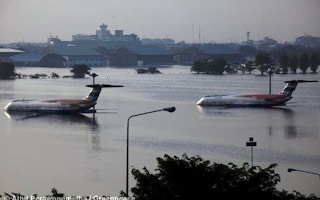From November 28 to December 10, the United Nations Climate Change Conference will bring representatives of the world’s governments, international organisations, and civil society together in Durban, South Africa. The conference will seek to advance the implementation of the UN Framework Convention on Climate Change (UNFCCC) and the Kyoto Protocol, as well as the Bali Action Plan agreed at UNFCCC Conference of Parties in 2007 and the 2010 Cancun Agreements.
The two most important and contentious aspects in Durban will be developed countries’ commitments to reduce greenhouse gas emissions under a legally binding agreement, and the mobilisation of resources to fund climate change programs and projects in developing countries.
The outcome of the Durban conference is important for us Southeast Asians because our region does not have sufficient capacity to cope with the increasing effects and severity of climate change. The impacts also have far reaching social and economic consequences affecting health, agriculture, security, and economy, aside from inflicting further suffering on the region’s poor. The recent and ongoing floods in Thailand, Cambodia, Vietnam and Myanmar illustrate this very clearly. Said to be caused by an unusual monsoon season, the floods have killed hundreds and affected more than 10 million people in Thailand alone. Floods have also damaged rice supply and manufacturing, costing Asean economies billions of dollars.
A 2009 study by the Asian Development Bank (ADB), suggests that on average Southeast Asia “is likely to suffer more from climate change than the rest of the world, if no action is taken,” entailing huge economic costs. More recently, a Climate Change Vulnerability Index released by risk advisory firm Maplecroft has identified five Asean member countries – Indonesia, Myanmar, Vietnam, the Philippines and Cambodia – to be at extreme risk from climate change due to extreme weather.
Only last week, the UN Intergovernmental Panel on Climate Change (IPCC) released a summary of its Special Report on climate impacts and disaster risk management. The new report confirms that climate change is fuelling extreme weather and escalating the human and economic costs, which are increasingly being borne by the developing world. Asean nations must face this growing challenge year after year.
When Indonesia became Asean chair in January this year, it gave Asean citizens hope for action against climate change with a public plea to the other nine member-governments to have one voice in Durban. Indonesia wants Asean countries to call for wealthy nations to slash emissions according to defined targets. It was also reported that Indonesia will propose a joint Asean statement to push for the continuation of the Kyoto Protocol on emissions reductions after 2012. The emissions cut targets of wealthy nations, said Indonesia, should no longer be as pledged, and the reductions must be based on 1990 levels, not 2005 figures.
One month before Indonesia’s 2011 Asean chair term ends it led the regional inter-governmental association in a new agreement called the Bali Concord III, which is as remarkable as its parts I and II. Bali Concords I and II laid down the context for a rule-based cooperation to address a problem that affects the entire region; an example of which is climate change. Bali Concorde III is a climate change action plan, including capacity building to address adaptation, commitment to strengthen the Kyoto Protocol, and finally, to promote the transfer and funding of climate-friendly technologies.
Indonesia’s call for one Asean voice in Durban and the recent Asean Summit agreement on Bali Concord III for Asean to push for a legally binding agreement on climate change, are clear steps forward. A fair, ambitious and legally binding international agreement is what Southeast Asia and the whole planet needs to mitigate greenhouse gas emissions and avert the worst impacts of climate change.
While Indonesia’s chairmanship has clearly pushed the climate issue higher up Asean’s agenda, The Bali Concorde III could fail like the 1985 Asean Agreement on the Conservation of Nature and Natural Resources, which was never ratified or implemented - a classic example of the Asean way of agreeing, and only agreeing.
Prudence though tells us that the reason behind the Asean reasons is lack of political will. If there is a will, as the saying goes, there is a way.
A way to have an Asean voice in the UNFCCC is for Asean leaders to give mandate to the each of their national delegations to act together in Durban and speak for and on behalf of Asean on the positions laid down in Bali Concord III.
If there is no mandate, there will be no Asean voice. If this is so, Indonesia’s climate leadership will have been for nothing and the Bali Concord III will be another 1985 conservation agreement.
Asean will consign its people’s to further untold suffering if Bali Concord III becomes another matter that was once agreed in Asean but then archived.
Zelda DT Soriano is the Southeast Asia Political Advisor for Greenpeace.









